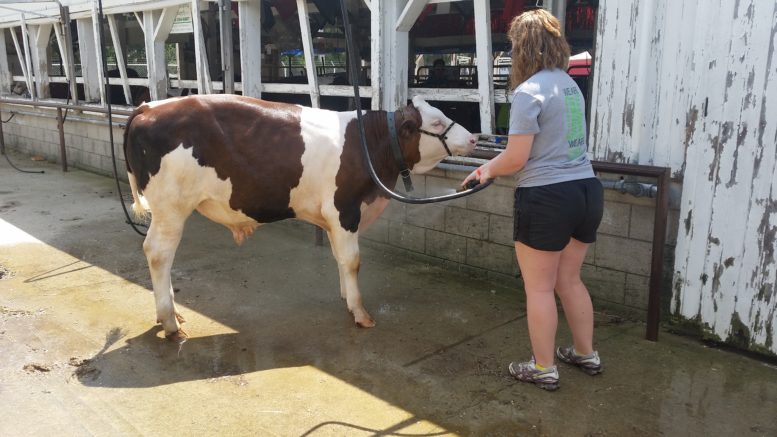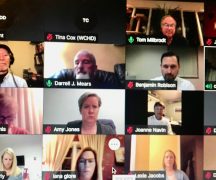By JAN LARSON McLAUGHLIN
BG Independent News
Tuesday afternoon, Gov. Mike DeWine ordered all county fairs to be restricted to junior fairs. That means no grandstand events, no rides and no games. Tuesday evening, the Wood County Board of Health suggested that Wood County Fair go a step further to accommodate families with COVID-19 concerns.
The health board voted to recommend the fair board turn the livestock exhibits into “pull-in shows.”
Parents had expressed concerns to the health department about the fair board requiring that livestock be at the fair the entire week of Aug. 3 to 10. While that is customary for fair week, families asked that instead youth be allowed to show their livestock one day and then take the animals home, said Ben Batey, former health commissioner and now chief health officer at BGSU and health consultant to the department.
Richard Strow, a member of the health board, said the fair board may be reluctant to cut short the livestock shows because of the fair tradition for many rural families.
“The fair was their family vacation,” Strow said.
Batey also got the impression that the fair board feared granting some exemptions because, “it would snowball.”
Strow suggested the health board make a strong suggestion to the fair board that it adopt a “pull-in show” plan, where the animals are brought to the fairgrounds the evening before they are shown, then leave when done. The board also recommended that accommodations be made to keep people from congregating in an area.
In order to reduce the number of people gathering in one area, Strow recommended that species at different locations on the fairgrounds share show days. For example, beef cattle could be shown the same day as rabbits, pigs and goats on the same day, and dairy cows and sheep on another day to spread out people, he said.
“As a health board member, and a former parent, and uncle of two boys showing,” that plan makes sense, Strow said.
The only negative may be that some of the larger livestock may not be accustomed to new places, but if the fair board is a “little more flexible,” it could work, Strow said.
Garrett Chamberlain, first vice president of the Wood County Fair Board, stopped by the health board meeting Tuesday evening to learn about the health board’s recommendation. He said the request that the livestock shows be changed to “pull-in” events is probably doable this year.
“We don’t want to jeopardize anybody’s health,” Chamberlain said.
Tuesday’s announcement by DeWine was not what the fair board wanted to hear.
“We had been warned the fairs had to do a better job managing crowds,” Chamberlain said. So the Wood County Fair was working on those plans.
“This close to the fair is the biggest concern,” since the fair starts on Monday, he said.
Planning for county fairs has been a roller coaster ride this year. Initially, it was cautioned that there would be no fairs. Then the state was open to junior fairs, which then opened up to fuller fairs.
But after outbreaks of COVID-19 have been linked to county fairs, DeWine said he was reverting back to the more restrictive junior fair plans.
While the state gave county fairs $50,000 each to take COVID safety measures, Chamberlain said that doesn’t come close to paying enough to put on a junior fair.
“We need the other events to pay for the junior fair,” he said, noting that it takes about $130,000 to put on the junior fair.
As for the entertainment contracts at the fair, Chamberlain said the fair board was busy working on those.
“We’re going to have an emergency meeting tomorrow night,” he said.





